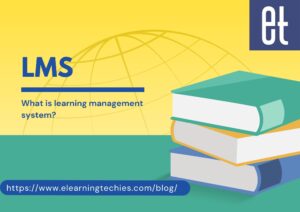Introduction

A Learning Management System (LMS) is a software application or web-based technology used to plan, delivereducational content and training programs, manage and report on courses, training programs, or learning and development programs.
Objectives
The primary objectives of a Learning Management System (LMS) are:
- Delivery of educational content: To provide a centralized platform for delivering and accessing learning materials, such as video lessons, text, and multimedia.
- Tracking student progress: To monitor and track student progress, such as completion of courses and assessments.
- Assessing performance: To provide a means for evaluating student performance, such as through online quizzes, exams, and assessments.
- Improving accessibility: To make learning and training more accessible, flexible and convenient by delivering it online.
- Improving efficiency: To streamline the delivery and management of educational content, reducing administrative workload and improving overall efficiency.
- Enhancing engagement: To increase student engagement and motivation by providing a dynamic and interactive learning experience.
Scope and Functions
The scope of a Learning Management System (LMS) includes:
- Course content management: The ability to create, upload, and manage digital educational materials, including multimedia, text, and assessments.
- Student administration: Management of student information, including enrollment, progress tracking, and assessment results.
- Course delivery: The delivery of online courses and training programs, including multimedia content, quizzes, and assessments.
- Reporting and analytics: The generation of reports and data analysis to track student progress and measure program effectiveness.
- Communication and collaboration: Tools for communication and collaboration between students and instructors, including discussion forums, messaging, and project management.
- Mobile support: Mobile-responsive design or mobile app support for accessing learning content on-the-go.
- Integrations: The ability to integrate with other software systems, such as HR systems,payment gateways, and content repositories.
- Course authoring: Tools for creating, uploading, and managing digital educational content, including multimedia, text, and assessments.
- Student registration: The ability to enroll students and manage student information, including tracking progress and assessment results.
- Assessment and grading: The ability to create and administer online assessments, quizzes, and exams, and track and report on results.
- Progress tracking: The ability to monitor and track student progress, including course completion, time spent on course material, and overall performance.
- Reporting and analytics: The generation of reports and data analysis to track student progress, measure program effectiveness, and identify areas for improvement.
Conclusion
Learning Management System (LMS) is a powerful tool for delivering and managing educational content and training programs. It offers a centralized platform for storing and organizing course materials, tracking student progress, and assessing performance. With its range of features, such as course authoring tools, online quizzes and assessments, gradebooks, and reporting, an LMS makes it possible to create engaging and interactive learning experiences. By providing the means to monitor and evaluate student progress, LMSs help organizations and educational institutions to measure the effectiveness of their training programs and identify areas for improvement. In short, an LMS can greatly enhance the quality, efficiency, and accessibility of e-learning and training program
